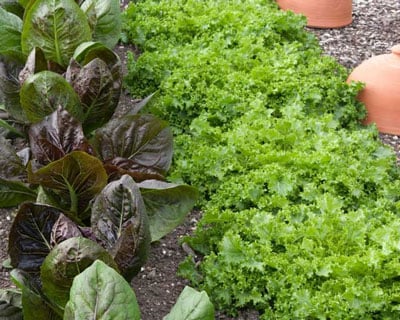Sowing using your cookbook
Our Chief Horticulturist turns his decision-making process on its head when it comes to choosing what to grow
Do you ever see interesting vegetables in seed catalogues, grown them and then not use them? I am afraid that I do, so am starting from the other direction this year. Let’s see what alluring recipes I can find and grow to suit them with a clear end use in mind....
My ex-colleague, Caroline Craig, quit the RHS Press Office last year to write her new book, Provence, using family recipes from her
Although tomatoes and other tender crops are only in season briefly in most British gardens, others are available for longer; chard, endives, both frilly and plain-leaved, cardoons for example. I know this because I have numerous Italian allotment neighbours who favour these crops. Even better, they are generous with plants and seeds, although on the downside their culinary instructions are often sketchy.
It is the method of utilising crops that is important. The Italian plotholders cook escarole – outlandish though to may seem to us (it's a plain-leaved endive and it is delicious cooked) and so it seems they do in Provence as well.
More adventurously, I have taken a shine to Korean food. Korean cuisine seems to have potential with its tasty soups and pickled or fermented vegetables, often using vegetable that I grow already; carrots, courgettes, leeks, ridge cucumbers, salad onions, spinach.
However, bracken shoots, bellflower roots and other exotic delicacies will have to wait. If they were worthwhile they would already be widely grown. On the other hand, according to my new Korean cookery book, Our Korean Kitchen by Jordan Burke and Rejina Pyo (Christmas present), there are some easier options. Radishes for example, not the Japanese mooli radish but shorter greener ones used for fermenting, and white ones that seem like the well-known ‘Icicle’.
Chinese cabbage is another Korean staple, easy to grow, not so easy to keep pest free, which is why I have not grown it for years. Like radishes it is a martyr to cabbage root fly, but since my turnips and swedes have to grow under insect-proof mesh it is easy enough to cover radishes and Chinese cabbage too. Then there is shiso (perilla), a herb which I have grown only as an ornamental, with its basil like flavours.
I really need a Korean allotment neighbour, but it is a start.
